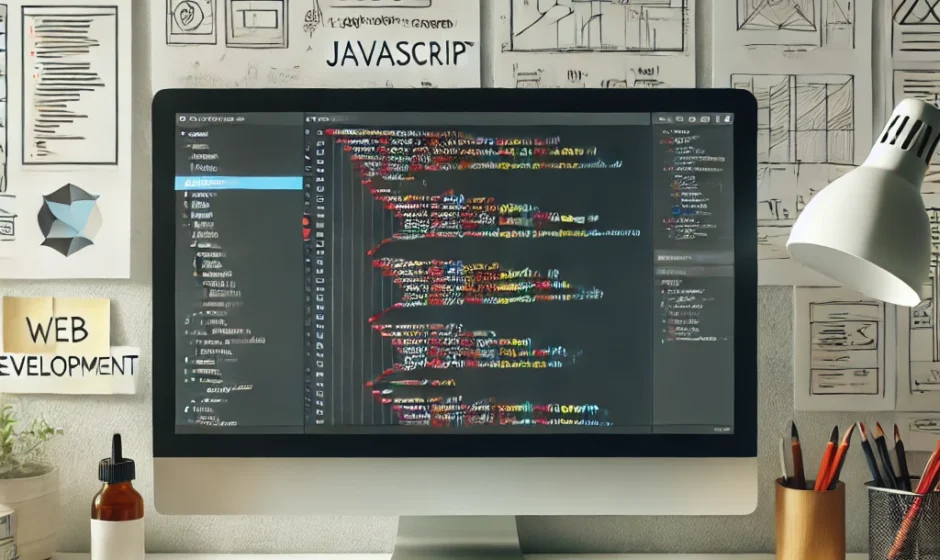What is Basic Web Development? A Beginner’s Guide to Front-End, Back-End, and Full-Stack Development
Web development refers to the process of building, creating, and maintaining websites. Whether you’re crafting a simple webpage or developing complex web applications, web development is essential to providing users with a seamless online experience. The process encompasses a range of tasks, from coding and markup to design and content creation.
Basic web development can be broken down into several key components, including front-end development, back-end development, and full-stack development. Each of these areas plays a critical role in making websites functional, user-friendly, and accessible. Let’s take a closer look at what basic web development involves.
1. Front-End Development
Front-end development, also known as client-side development, deals with the parts of a website that users directly interact with. It focuses on the visual aspects and user experience (UX) of the website. The key technologies used in front-end development are:
- HTML (HyperText Markup Language): The building block of any website, HTML structures the content and layout. Think of it as the skeleton of a webpage, laying out the various elements like text, images, and links.
- CSS (Cascading Style Sheets): While HTML provides the structure, CSS brings style and formatting to the website. It allows developers to customize fonts, colors, spacing, and the overall layout, ensuring the website aligns with brand guidelines and design preferences.
- JavaScript: JavaScript is what adds life to a website. It’s used to create interactivity on websites, such as animations, sliders, drop-down menus, and dynamic content updates that don’t require the page to refresh.
Front-end developers must ensure that websites are visually appealing, user-friendly, and responsive (optimized for viewing on various devices, such as desktops, tablets, and smartphones). They need a keen understanding of design principles and how to implement these through code.
2. Back-End Development
While front-end development focuses on the visible parts of a website, back-end development deals with the server side, managing how the website works. Back-end developers handle the data storage, processing, and management required for a website to function properly.
Core technologies and components in back-end development include:
- Programming Languages: Common languages for back-end development include Python, PHP, Ruby, and Java. These languages help write scripts that connect the server, database, and front-end interface.
- Databases: Websites often need to store and manage data, whether it’s user accounts, transactions, or blog posts. Popular databases include MySQL, MongoDB, and PostgreSQL. Back-end developers use these to store and retrieve data efficiently.
- Servers: This is where the website’s data is hosted. Web servers process requests from users, fetch data from the database, and send the necessary information back to the front-end interface. Technologies like Apache, Nginx, or cloud-based servers like AWS are commonly used.
Back-end development is particularly crucial for dynamic websites, such as e-commerce platforms, social networks, and content management systems (CMS) that require data management and security.
3. Full-Stack Development
Full-stack development refers to developers who are knowledgeable in both front-end and back-end development. A full-stack developer can work on both the client side and server side, making them highly versatile. They understand how to build an interface that looks great and functions seamlessly, while also managing how data is stored, processed, and retrieved in the background.
Full-stack developers typically have proficiency in a wide range of technologies, from HTML and CSS to server-side programming and databases. They are particularly valuable in small teams or startups where versatility and adaptability are essential.
4. Web Development Tools & Frameworks
To streamline the process of web development, developers often rely on tools and frameworks. These tools simplify coding tasks and improve efficiency, ensuring that websites can be built faster and more effectively. Some of the most popular tools and frameworks include:
- Bootstrap: A CSS framework that makes responsive design easy to implement. With pre-built components and a grid system, Bootstrap helps developers create websites that work well on all devices.
- React, Angular, Vue: These are JavaScript frameworks that make it easier to build complex, dynamic user interfaces. They allow developers to break down the website into reusable components, reducing code repetition.
- Django, Node.js, Laravel: These back-end frameworks help organize and speed up server-side development. They offer libraries and tools that simplify data handling, user authentication, and more.
These tools enable developers to work more efficiently, allowing them to focus on design and functionality rather than repetitive coding tasks.
5. Key Concepts in Web Development
As you begin your journey into web development, there are a few key concepts that are fundamental to building modern websites:
- Responsive Design: Websites must adapt to different screen sizes. Whether viewed on a desktop, tablet, or smartphone, the design should automatically adjust to provide an optimal experience. Techniques like media queries in CSS make this possible.
- Version Control: Tools like Git allow developers to track changes to their code, collaborate with others, and roll back to previous versions if necessary. Version control is essential for any development project, big or small.
- APIs (Application Programming Interfaces): APIs allow different software programs to communicate with each other. For example, if a website needs to fetch data from a third-party service (like weather updates or social media feeds), it can do so using an API.
Understanding these concepts is crucial for any aspiring web developer, as they form the foundation of modern web development practices.
6. Conclusion
Basic web development is the foundation of creating websites that are visually engaging, functionally sound, and easy to use. Whether you’re interested in front-end development, back-end development, or both, understanding the basics is essential.
With knowledge of essential languages like HTML, CSS, and JavaScript, along with a grasp of back-end technologies, you’re well on your way to building functional, attractive websites. As you gain experience, you can delve deeper into advanced topics like database management, web security, and performance optimization.
Web development is constantly evolving, with new tools, frameworks, and best practices emerging all the time. Whether you’re pursuing web development as a career or a hobby, staying updated with the latest trends will ensure your skills remain in demand and relevant.




